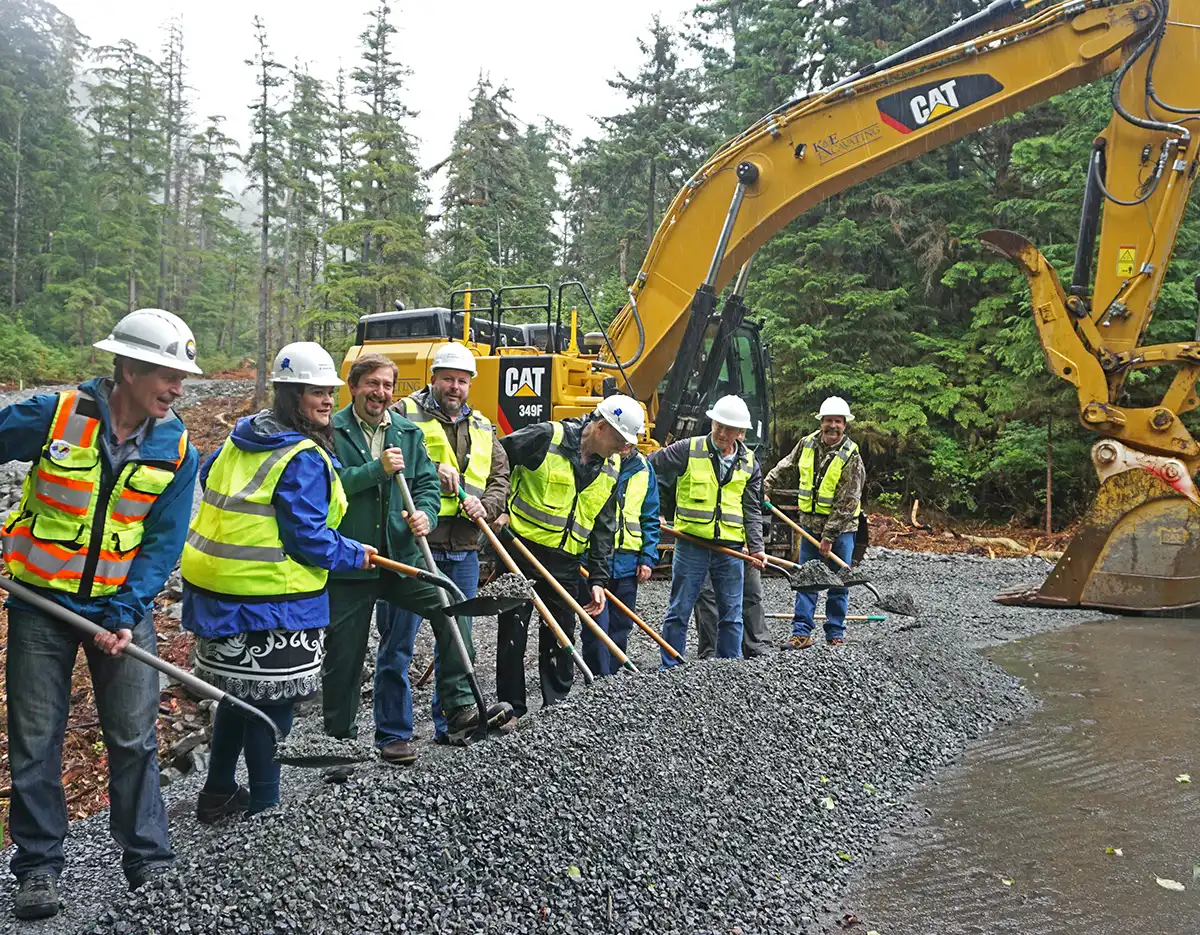
Update
the STIP
The Alaska Statewide Transportation Improvement Program, or STIP, received partial approval from the Federal Highway Administration, allowing state transportation projects to move forward.
laska Department of Transportation and Public Facilities, or DOT&PF, Commissioner Ryan Anderson delivered good news to a room of Associated General Contractors, or AGC, of Alaska members gathered for AGC’s Agency Day in Fairbanks in April: the Alaska Statewide Transportation Improvement Program, or STIP, had received partial approval from the Federal Highway Administration, or FHWA, and DOT&PF was making progress on the final parts of the plan that needed further revision.
Anderson and Deputy Commissioner Katherine Keith made the announcement via Zoom when they joined an in-person DOT&PF panel updating AGC members about construction projects within its three regions.
“A partial approval means we are 99 percent there,” Anderson said during the presentation. “There is only a small section left that needs corrections.”
The STIP outlines the transportation vision for the entire state. It includes interstate, state, and some local highways, bridges, ferries, and public transportation, but does not include airports or non-ferry-related ports and harbors. All system improvements that receive partial or full federal funding within the STIP’s four-year period are listed in a package that is submitted to FHWA, including Metropolitan Planning Organization, or MPO, and Western Federal Lands Highway Division expenditures.
“In a nutshell, the purpose of the STIP is to outline in great detail funding for transportation in Alaska within the next four years,” says Keith in a post-presentation interview.
The Alaska STIP hit a road bump in February when FHWA rejected the initial submission. Keith explains that this came as a surprise since nothing significant had changed in FHWA’s requirements. The initial submission reflected past STIPs and other amendments made just last year. Keith says that the transportation planner at the Alaska Division Federal Highway Administration retired recently and, with the position still vacant, a planner from Washington D.C. temporarily took on the role. She says this person reviewed the submission with a different rigor.
“No regulations changed; how they were applied to Alaska did change,” says Keith. “We respect that and are willing to stick to the letter of the regulations for complete transparency.”

Alaska Department of Transportation & Public Facilities Deputy Commissioner Katherine Keith says several projects are already seeing the effects of the delayed approval.
The remaining six are the Railroad Anchorage North & South Rail Corridor; Aurora Drive-Noyes Slough Bridge Replacement in Fairbanks; Port of Alaska North Extension Stabilization Step 1 project; the Promoting Resilient Operations for Transformative, Efficient, and Cost-Saving Transportation, or PROTECT, Program; Ferry Boat Funds Placeholder as Future Match using Toll Credits program; and the Bridge and Tunnel Inventory, Inspection, Monitoring, Preservation, Rehab, and Replacement Program. Keith says DOT&PF will submit a new amendment that addresses FHWA’s corrective actions and recommendations for public comment on June 1.
Keith says several projects are already seeing the effects of the delayed approval. Per regulations, FHWA requires a formal STIP amendment if project costs change by a certain percentage for projects over $1 million. Keith says projects that are in progress are already in excess of their project thresholds, while other MPOs are waiting for STIP approval before implementing their local Transportation Improvement Programs. For awarded projects or projects already underway, DOT&PF is developing strategies that allow construction to continue.
Keith says doing so will prevent delays like what happened this year. Inching a year at a time would also allow DOT&PF to schedule amendments by staying in better sync with MPO’s Transportation Improvement Program amendments.
“A lot of states produce a Rolling STIP,” says Keith.

Deputy Commissioner, Alaska Department of Transportation and Public Facilities
Keith also recommends visiting DOT&PF’s Alaska Project Exchange, or APEX, website (bit.ly/APEXsite). Though it’s still in its early stages, DOT&PF is positioning APEX to be the main resource for DOT&PF construction information.
On the page, visitors can either use a filtered search or click on an interactive map to find projects in a specific area, then click on the project outlines to view additional information including project descriptions, schedules, and contact information.
“These tools are part of a systemic improvement,” says Keith. “Commissioner Anderson is cognizant of how important it is to keep the public informed.”

In addition to updating Associated General Contractors, or AGC, of Alaska members about the Alaska Statewide Transportation Improvement Program, or STIP, DOT Regional Directors Sean Holland (Central), Joe Kemp (Northern), and Christopher Goins (Southcoast) presented in-person at AGC’s Agency Day April 14 at the Wedgewood Resort in Fairbanks.
Each director provided a quick snapshot of the construction in their respective regions. One of the largest existing projects in the Southcoast Region is the Haines Highway Reconstruction Project, which is now in Phase 3, between Mileposts 20 and 25. Another forty projects in the region are on the tentative advertising schedule through February 2025.
In the Northern Region, thirty-six projects are slated for the 2024 construction season, a quarter of which are in Fairbanks. Also scheduled for the 2024 construction season are twenty-four projects in the Central Region with another twenty on the 2024 tentative advertising list in addition to several proposed construction projects at Anchorage International Airport.